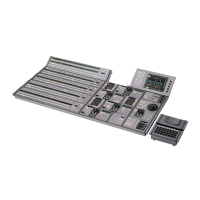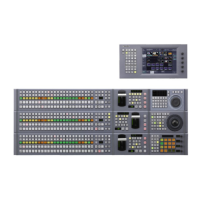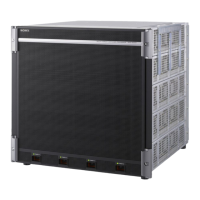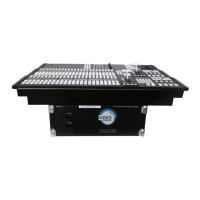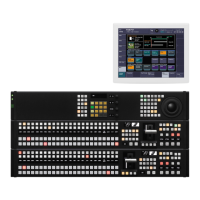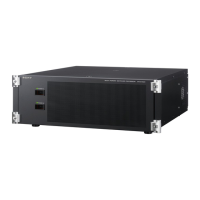Creation of Special Effects and Management of Data and Operations 27
Chapter
1
MVS-8000X/7000X
Functions
Creation of Special
Effects and Management
of Data and Operations
This section introduces functions used for creation of
special effects, control of external devices or switcher
operations, and data management.
Digital Multi Effects (DME)
When used with the switcher, DME allows you to add
three-dimensional effects such as image movement,
rotation, magnification and shrinking, as well as a wide
variety of special effects.
Each channel can be used on its own or in combination
with other channels, which allows you to create advanced
effects with more complexity.
The following types of DME special effects are available.
•
Edge effects: Border, Crop, Beveled Edge, Key Border,
Art Edge, Flex Shadow
•
Effects for entire image: Defocus, Blur, Multi Move
•
Effects for video image: Sepia, Mono, Posterization,
Solarization, Nega, Contrast, Mosaic, Mask, Sketch,
Metal, Dim and Fade, Glow
•
Freeze effects
•
Nonlinear effects: Wave, Mosaic Glass, Flag, Twist,
Ripple, Rings, Broken Glass, Flying Bar, Blind, Split,
Split Slide, Mirror, Multi Mirror, Kaleidoscope, Lens,
External Device Control
In this system, you can operate while controlling the
following types of external device:
•
Devices supporting P-Bus (Peripheral II protocol)
•
Devices supporting GPI
•
VTRs
•
Disk recorder (Sony disk 9-pin protocol and video disk
communications protocol, Odetics protocol)
•
Extended VTR (Abekas A53 protocol)
For details on the devices that can be connected, consult
your Sony representative.
You can control an external device by previously
registering timeline keyframes.
For details, see Chapter 12 “External Devices” (Volume
2).
Keyframes
A keyframe represents an instantaneous state of an image;
it can be saved in a register and recalled for reuse.
By arranging a number of keyframes on the time axis, and
interpolating between successive keyframes, you can
create a “keyframe effect” in which there is a continuous
change from each keyframe to the next.
The following figure shows three keyframes created with
a wipe pattern (the circle) in different positions. This is
interpolated to create the effect shown.
Circle, Panorama, Page Turn, Roll, Cylinder, Sphere,
Explosion, Swirl, Melt, Character Trail
•
Lighting effects: Lighting, Spotlighting
•
Recursive effects: Trail, Motion Decay, Keyframe
Strobe
•
Background color
Background A
Background B
Interpolated images
•
Separate Sides (effects for front and back sides)
•
Signal inversion (Invert effect)
•
Key density adjustment
•
Key source selection
Global effects
Global effects are special effects created by combining the
images of successive channels. The following types of
global effects are available.
•
Combiner
•
Brick
•
Shadow
For details, see “DME Operations” (page 269).
Keyframe 1 Keyframe 2 Keyframe 3
Effect execution
Example of keyframes and effect execution
You can save the sequence of keyframes representing a
single effect in a register. Then by recalling this register,
you can replay the same effect.
For details, see Chapter 13 “Keyframe Effects” (Volume
2).
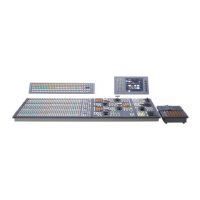
